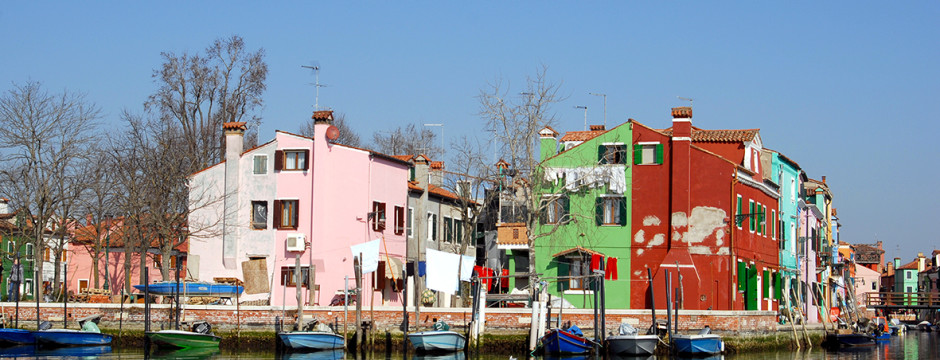Venice is a small archipelago of about 118 islands staying at the center of a large expanse of shallow water known as the Venetian Lagoon. This area was once an intricate estuary where rivers meandered in their last stretch before merging into the Adriatic sea. During the centuries the combined effects of ground subsidence, increasing sea level and river diversion brought to the present environment, a surface of 212 sq. miles of which 70% is made of water with an average depth of 5,12 feet.
The lagoon is now an extraordinary and composite environment made of water, mudflats, mud banks and true islands some inhabited as urban areas others mostly use for agricultural purposes.
The lagoon is one of the largest natural wet areas of Europe, a perfect place for a great number of local and migrating birds to live and breed. But this area is also the historical stage were the crucial events that brought to the birth of Venice took place, to became later the home of a powerful and long lasting state.
This tour aims to introduce you to all the facts any visitor to Venice should know about the lagoon a place where nature, culture, and history perfectly blend together.
Our first stop will be in Murano just a mile off the northern side of Venice, a resort for wealthy Venetians and a city of 20.000 inhabitants in its hey-days. It became a world class glass production center in the 13th cent. when all glass masters, previously working in Venice were asked to resettle there. And Murano is still the place where they continue working glass following a most traditional manner, the same since the early days. A visit to a glass workshop it has always been a must for any visitor, and it is your time now to be amazed by observing ingenious artisans transforming a shapeless mass of silica into refined and beautiful glass objects.
As we cross the calm waters of the lagoon we approach next the island of Burano, the ultimate picturesque location. The seclusion of the place, the colorful painted houses and the local fishing activities made Burano into the ideal setting for a group of local painters who settled there in the early 20th cent. Although Burano is now a major tourist destination it still retains a lot of that early ambiance, just wander around and let your sight be drawn naturally to all the surrounding colors. In case you wish to see local expert ladies sewing lace for which Burano has been famous just ask your guide.
And finally we arrive in Torcello, the church and the bell tower seen from distance look like a solitary beacon that recalls the early steps of those who first settled there fleeing the barbarian invasions. Just a few homes and two ancient monuments surrounded by open fields are left of a busy city providing to all visitors a feeling of a lost place in time and space. Let’s visit together the 1008 years old cathedral and observe the mosaics, the earliest in the lagoon. In such evocative place we’ll praise the legendary figure of Ernest Hemingway the most famous ‘promoter’ of Torcello in the post-war years who spent time there in the fall of 1948.
Notices:
From late July to the end of August and during all weekends when master glass craftspeople are off, in Murano you’ll see a glass demonstration and not the full production.
A shorter tour of four hours can be done including two islands over three.


